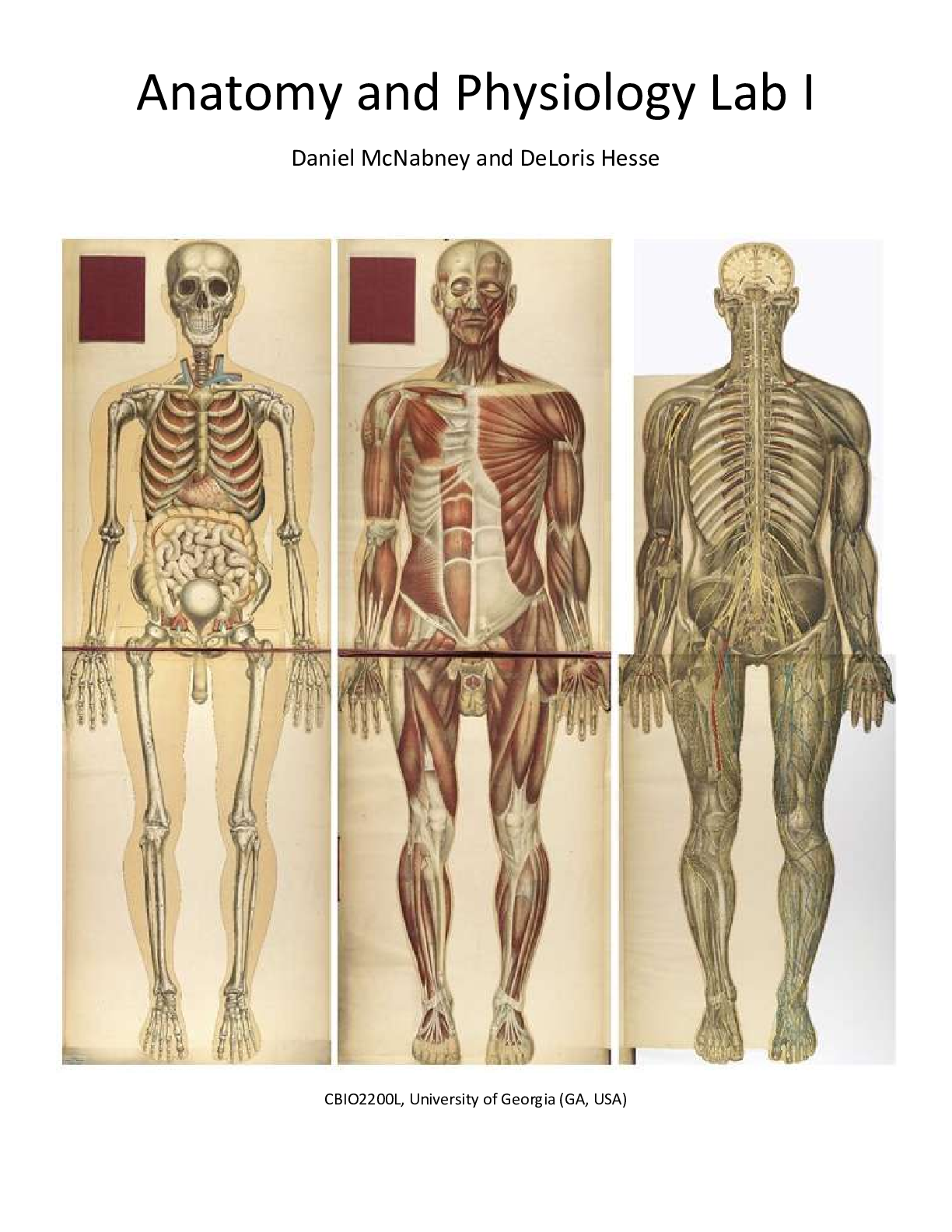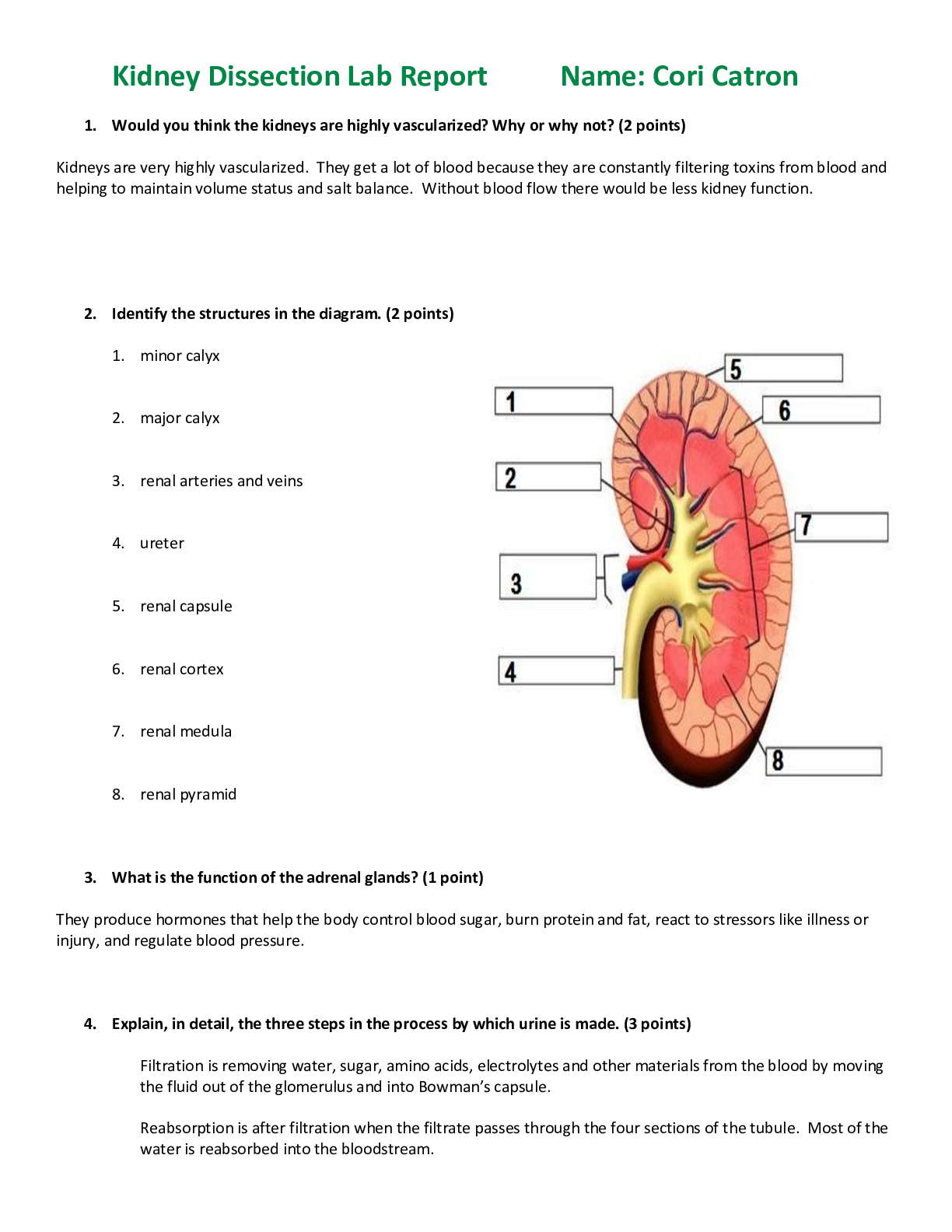History > Manual > GCE History A Y105/01: England 1445-1509: Lancastrians, Yorkists and Henry VII Advanced GCE Mark Sch (All)
GCE History A Y105/01: England 1445-1509: Lancastrians, Yorkists and Henry VII Advanced GCE Mark Scheme for November 2020
Document Content and Description Below
GCE History A Y105/01: England 1445-1509: Lancastrians, Yorkists and Henry VII Advanced GCE Mark Scheme for November 2020 Oxford Cambridge and RSA Examinations GCE History A Y105/01: England 1445-... 1509: Lancastrians, Yorkists and Henry VII Advanced GCE Mark Scheme for November 2020Oxford Cambridge and RSA Examinations OCR (Oxford Cambridge and RSA) is a leading UK awarding body, providing a wide range of qualifications to meet the needs of candidates of all ages and abilities. OCR qualifications include AS/A Levels, Diplomas, GCSEs, Cambridge Nationals, Cambridge Technicals, Functional Skills, Key Skills, Entry Level qualifications, NVQs and vocational qualifications in areas such as IT, business, languages, teaching/training, administration and secretarial skills. It is also responsible for developing new specifications to meet national requirements and the needs of students and teachers. OCR is a not-for-profit organisation; any surplus made is invested back into the establishment to help towards the development of qualifications and support, which keep pace with the changing needs of today’s society. This mark scheme is published as an aid to teachers and students, to indicate the requirements of the examination. It shows the basis on which marks were awarded by examiners. It does not indicate the details of the discussions which took place at an examiners’ meeting before marking commenced. All examiners are instructed that alternative correct answers and unexpected approaches in candidates’ scripts must be given marks that fairly reflect the relevant knowledge and skills demonstrated. Mark schemes should be read in conjunction with the published question papers and the report on the examination. © OCR 2020Y105-01 Mark Scheme November 2020 2 Annotations Annotation Meaning of annotation Blank Page Highlight Off-page comment Assertion Analysis Evaluation Explanation Factor Illustrates/Describes Irrelevant, a significant amount of material that does not answer the question Judgement Knowledge and understanding Provenance Simple comment Unclear ViewY105-01 Mark Scheme November 2020 3 Subject Specific Marking Instructions Question Answer Mark Guidance 1 Using these four sources in their historical context, assess how far they support the view that the mental breakdown of Henry VI in 1453 was the main reason for the outbreak of the Wars of the Roses. • In discussing how Source A does support the view, answers might consider that the source explicitly states the King’s illness left him incapable of the slightest action, emphasises his stupidity and the contrast between his abilities and those of his father, whilst also openly referring to his lack of interest in war. • In discussing the provenance of Source A, answers might point out that this was written during the reign of Edward IV, a Yorkist, and therefore might be critical • In discussing the historical context of Source A, answers might suggest that Henry VI was pious, reflected in the religious foundations of places such as King’s College. • In discussing how Source B does not support the view, answers might consider that this source refers to dissatisfaction with the King three years before his illness struck, emphasising the problem of his lack of impartiality in his treatment of the nobility as well as referring to the problem of failure in France and of armed conflict amongst the nobility. • In discussing the provenance of Source B, answers might refer to the contemporary nature of the source; to the fact that it has some benefit of 30 • No set answer is expected. • At Level 5 there will be judgement about the issue in the question. • To be valid judgements they must be supported by accurate and relevant material. • At Level 4 and below, answers may be simply a list of which sources support or challenge the view in the question. • Knowledge must not be credited in isolation, it should only be credited where it is used to analyse and evaluate the sources, in line with the descriptions in the levels mark schemeY105-01 Mark Scheme November 2020 4 hindsight and to the fact that the author, because of his geographical location, was very well-informed. • In discussing the historical context of Source B, answers might argue that there was a breakdown in law and order during Henry’s reign. • In discussing how Source C does not support the view, answers might consider that it emphasises the importance of issues such as factional infighting, whilst referencing in general the long-standing issue of the simple-mindedness of Henry VI, rather than the King’s catatonic state which began in 1453. • In discussing the provenance of Source C, answers might point out that Burgundy was an ally to the Yorkist and thus, although not directly involved in English politics, the chronicler cannot lay claim to clear objectivity. However, he does have the benefit of hindsight, being compiled after the fall of Henry VI in 1461. • In discussing the historical context of Source C, answers might well discuss that the Wars of the Roses began with the First Battle of St Albans in 1455 which revolved around the animosity between the Dukes of York and Somerset as well as taking place after Henry VI’s recovery from his catatonic state. • In discussing how Source D does support the view, answers might point out that the source suggests the King’s illness provided an opportunity for the quarrel between York and Somerset to come to a head. • In discussing the provenance of Source D, answers might consider that it was written during the reign of Edward IV. • In discussing the historical context of Source D, answers might point out that the animosity betweenY105-01 Mark Scheme November 2020 5 York and Somerset which lay behind the First Battle of St Albans had its roots in events from well before the onset of Henry VI’s breakdown. Furthermore, its reference to the dislike felt by many for Somerset could be cross-referenced to mention of the French War in Source B, whilst its stress on Somerset’s malice in stirring the King against York also makes clear the King’s recovery from Christmas 1454 which meant he was capable of playing a decisive role once he had recovered. 2* ‘Henry VII’s rule in England was consistently successful.’ How far do you agree? In arguing Henry VII’s reign was consistently successful: • Answers might consider the successful defeat of rebellions ranging from the Lovell Rebellion of 1486 to the execution of Warbeck in 1499 and the absence of rebellion thereafter. Such answers might point out that both dynastic and financial rebellions were consistently put down. • Answers might consider the consistent use of a range of strategies through which to control the nobility such as bonds and recognisances, spies, the work of Empson and Dudley, and the use of attainders. • Answers might consider the consistent attempt to strengthen the legitimacy of the Tudor dynasty by, for example, the King’s own marriage to Elizabeth of York and the later marriage alliances of his children with Scotland and Spain. • Answers might consider the consistent attempts to strengthen royal authority through, for example, the reliance on Chamber finance, improvement in the 20 • No set answer is expected. • At higher levels, candidates will focus on weighing up ‘consistently successful’, but at level 4 may simply list reasons or otherwise. • At level 5 and above, there will be judgement in terms of success and the relative importance of factors determining that success. • At higher levels, candidates might establish criteria against which to judge the nature of ‘successful’. • To be valid judgements, claims must be supported by relevant and accurate material. If not, they are assertions. • Knowledge must not be credited in isolation; it should only be credited where it is used as the basis for analysis and evaluation, in line with the descriptions in the levels’ mark scheme.Y105-01 Mark Scheme November 2020 6 distribution and management of Crown lands, closer control of the North and of retaining. • Answers might also consider that, in spite of everything, Henry handed on to his son a crown whose security had been challenged for many decades, and a full treasury. In arguing reign was not consistently successful: • Answers might consider that Henry VII’s treatment of rebellion could be seen as uneven. Despite his relatively straightforward defeat of the Simnel Rebellion, for instance, he was much less certain in his treatment of Warbeck whose rebellion lasted a far longer period. • Answers might argue that the later years of Henry’s reign were less successful than the earlier and that, indeed, he was ‘fortunate’ to die when he did, given the growing unpopularity of his regime as witnessed by the execution of Empson and Dudley immediately after that death. • Answers might argue that some of Henry’s policies were, in fact, counter-productive (e.g., though he undoubtedly strengthened the Crown financially, his treatment of the nobility increasingly alienated them, again seen by the potential for revolt by 1509). • Answers might consider that, despite the King’s efforts to strengthen his dynasty, the death of his son, Arthur, in 1502 left the succession more uncertain, something aggravated by the failure to resolve the issue of the Aragon marriage. • Answers might also consider that, despite his own marriage, Henry failed to resolve the animosity between rival branches of the Royal Family, given the fate of Elizabeth Woodville and the possibleY105-01 Mark Scheme November 2020 7 animosity between Elizabeth of York and Margaret Beaufort. 3* ‘The main aim of Henry VII’s foreign policy was to achieve legitimacy for his dynasty.’ How far do you agree? In arguing the main aim was the achievement of dynastic legitimacy: • Answers might consider the importance of the marriage alliances made for Henry’s children which connected the Tudors with Spain and Scotland and shifted the focus of English foreign policy away from its traditional concentration on France. • Answers might consider Henry VII’s fear of both Spanish and Scottish involvement in the threat posed by Perkin Warbeck. • Answers might consider the suspension of AngloBurgundian trade 1493-6 because of Margaret of Burgundy’s support for Perkin Warbeck. • Answers might consider the continued pursuit of the Aragon marriage even after the death of Arthur and despite the religious problem that it posed. • Answers might consider the early truces made with France and Scotland to allow concentration on the establishment of the Tudor dynasty at home. • Answers might consider the promise extracted from France at the Treaty of Étaples to give no help to Perkin Warbeck. • Answers might also consider Henry’s attempts to secure a foreign bride for himself following the death of Elizabeth of York and the need to strengthen the succession. 20 • No set answer is expected. • At higher levels, candidates will focus on weighing up ‘how far’, but at level 4 may simply list reasons. • At level 5 and above, there will be judgement as to the relative importance of reasons. • At higher levels, candidates might establish criteria against which to judge the importance of reasons. • To be valid judgements, claims must be supported by relevant and accurate material. If not, they are assertions. • Knowledge must not be credited in isolation; it should only be credited where it is used as the basis for analysis and evaluation, in line with the descriptions in the levels’ mark scheme.Y105-01 Mark Scheme November 2020 8 In arguing the main aim of Henry VII’s foreign policy was not dynastic legitimacy: • Answers might point out that Henry was equally concerned with trade and so sought to maintain the cloth trade with Burgundy and to develop trading links with other kingdoms such as Spain. • Answers might consider that, very early in his reign, Henry was concerned to prevent Brittany falling to France and that it was this, rather than dynastic concerns, which led to the Treaty of Medina Del Campo. • Answers might argue the Treaty of Redon was more concerned with traditional English ambitions in France and with fear of French dominance of the Channel than with dynastic legitimacy. • Answers might consider the importance of financial motives in the Treaty of Étaples. • Answers might consider that the motive behind English involvement in the League of Cambrai was anti-Spanish, despite the importance of the latter to the Tudor dynasty. • Answers might consider Henry’s settlement with the Hanseatic League in 1504 owing to fear of its support for the Earl of Suffolk.Y105-01 Mark Scheme November 2020 9 APPENDIX 2 – this section contains additional subject specific information Use this space if you have extensive subject specific information that is inappropriate to include elsewhere.OCR (Oxford Cambridge and RSA Examinations) The Triangle Building Shaftesbury Road Cambridge CB2 8EA [Show More]
Last updated: 1 year ago
Preview 1 out of 11 pages
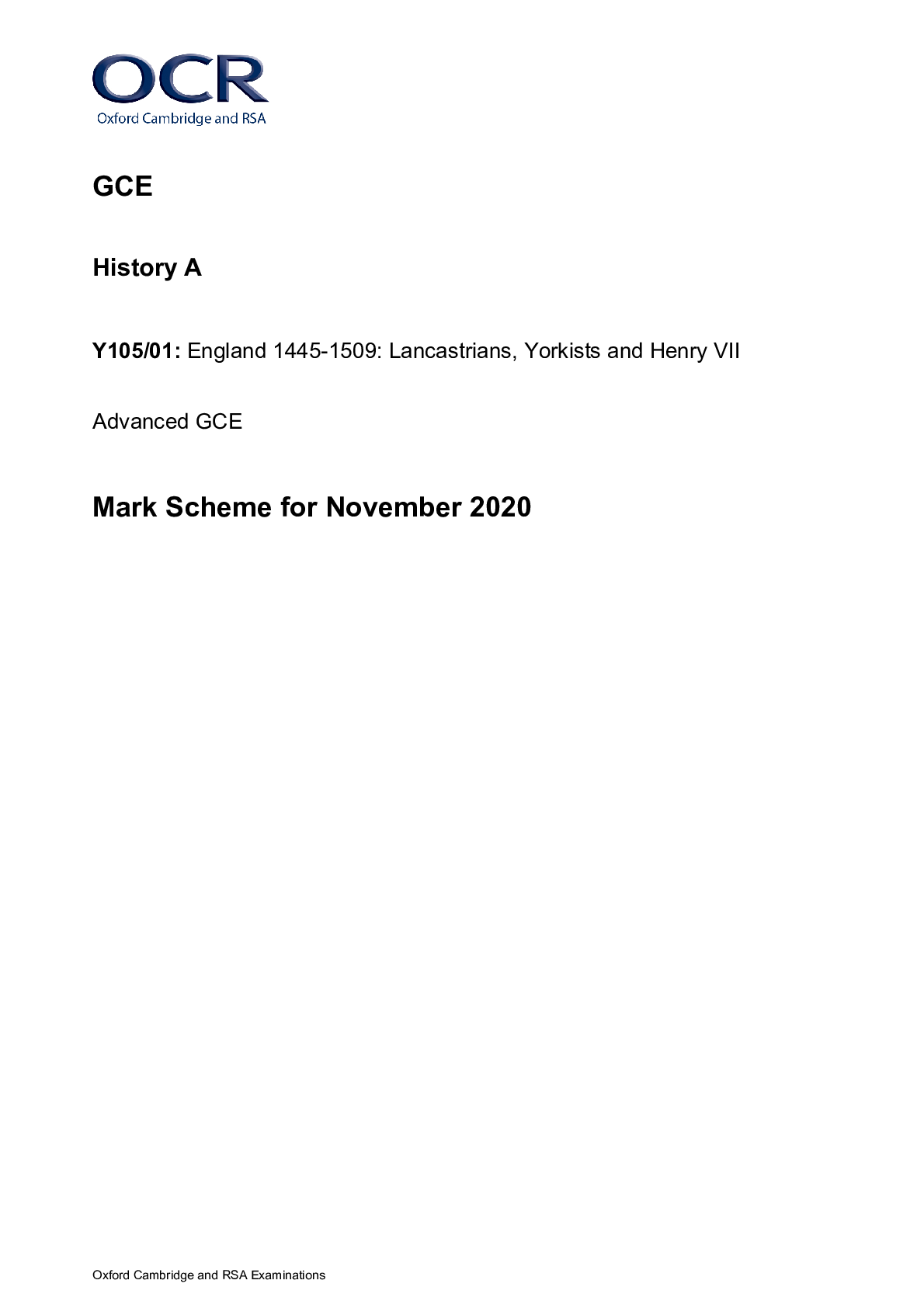
Reviews( 0 )
Document information
Connected school, study & course
About the document
Uploaded On
Jul 17, 2022
Number of pages
11
Written in
Additional information
This document has been written for:
Uploaded
Jul 17, 2022
Downloads
0
Views
52


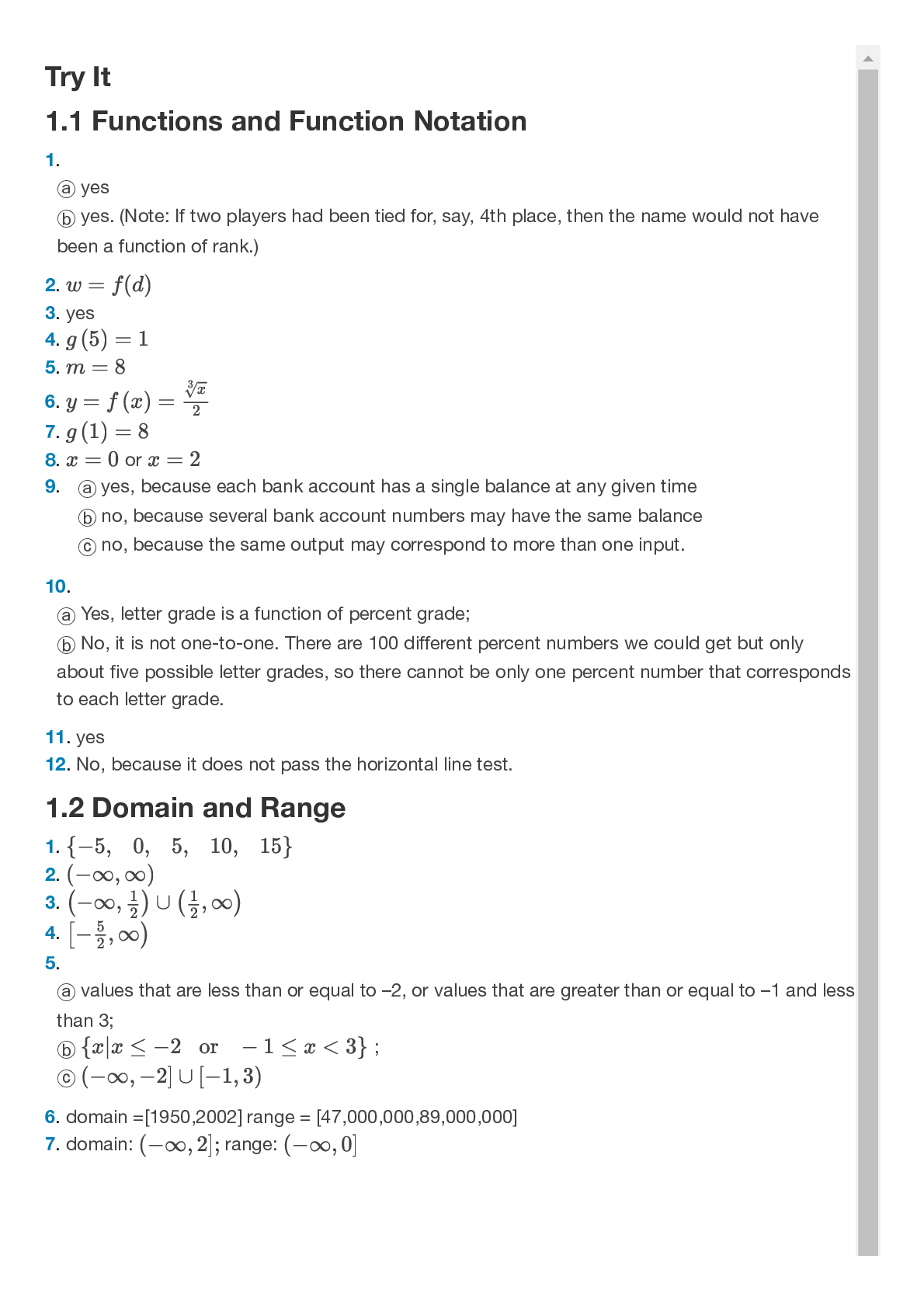
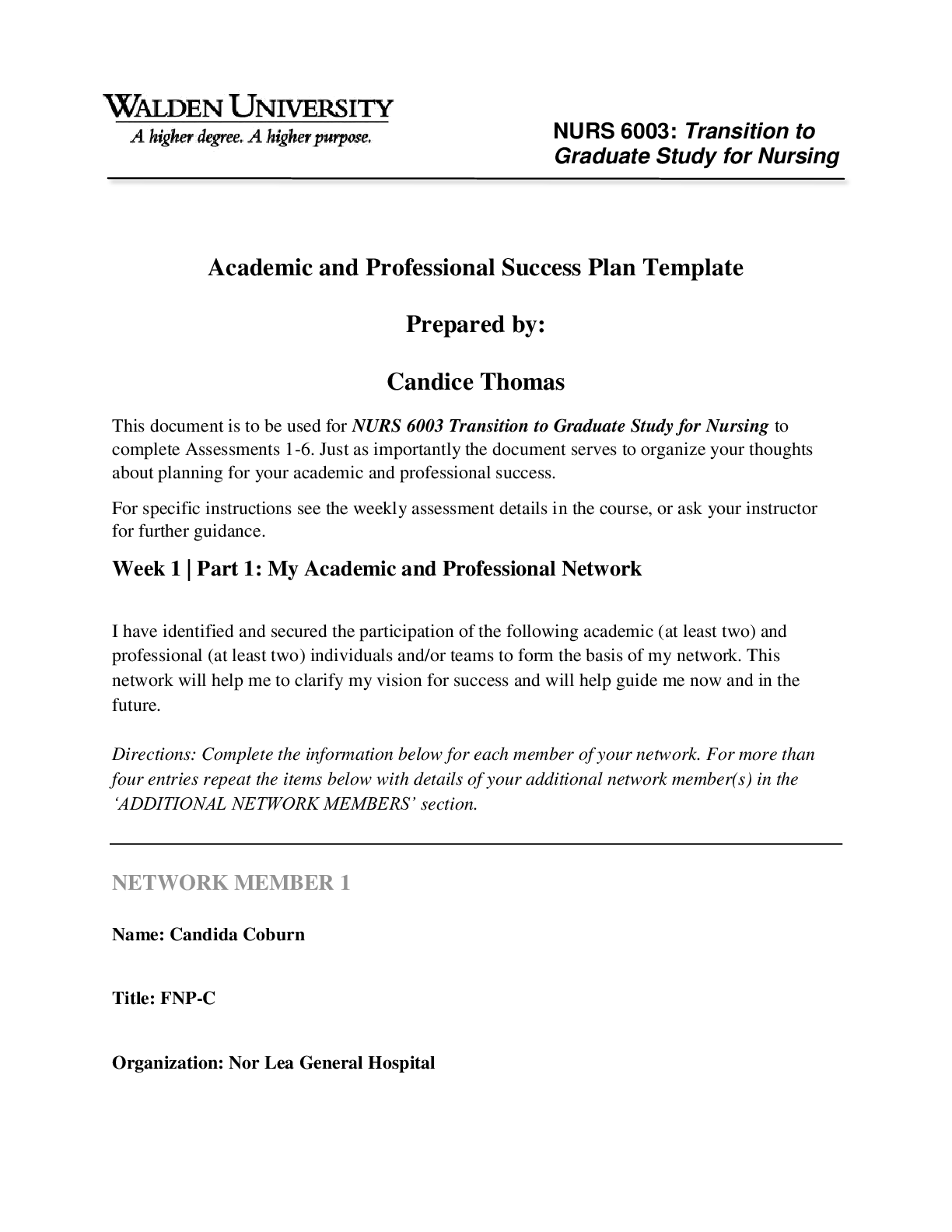
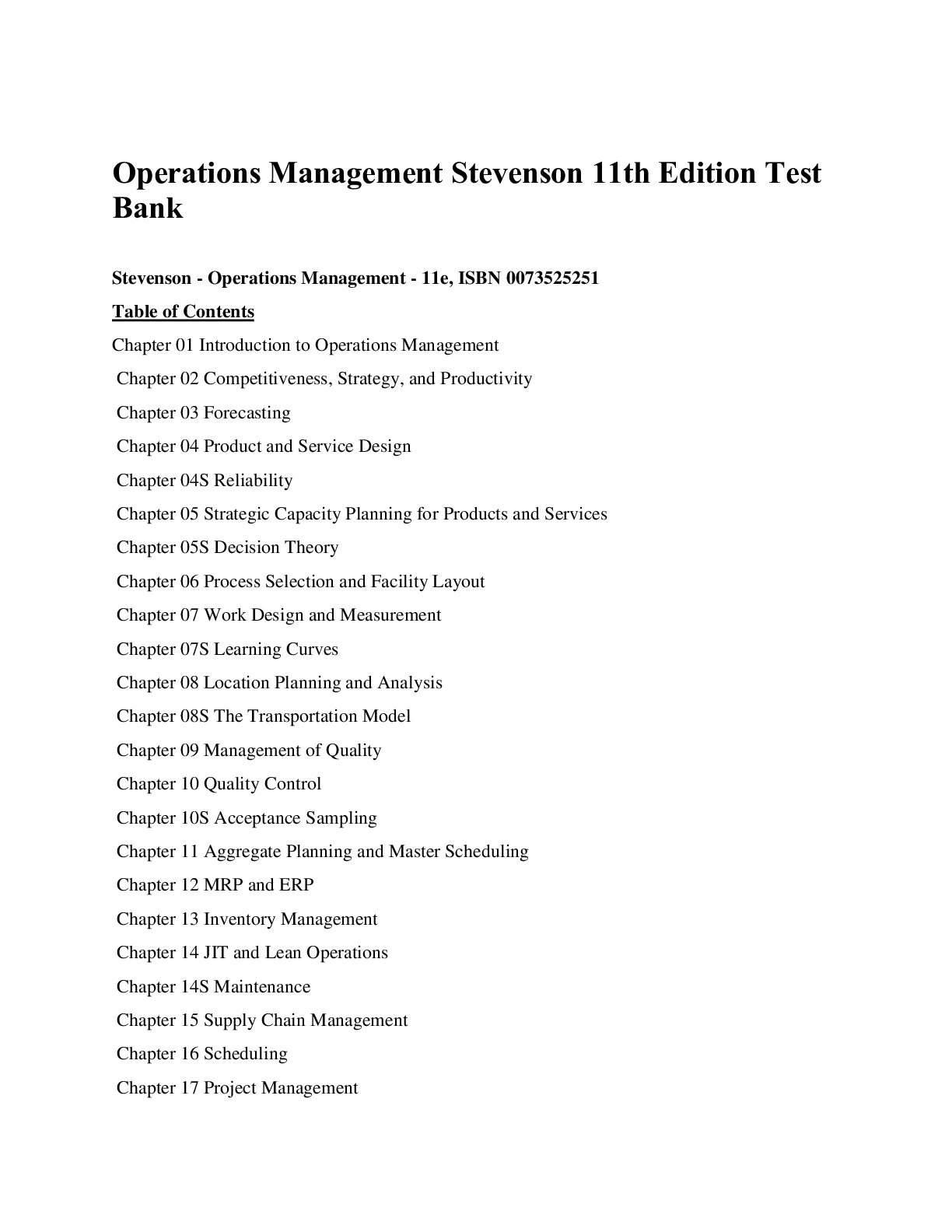
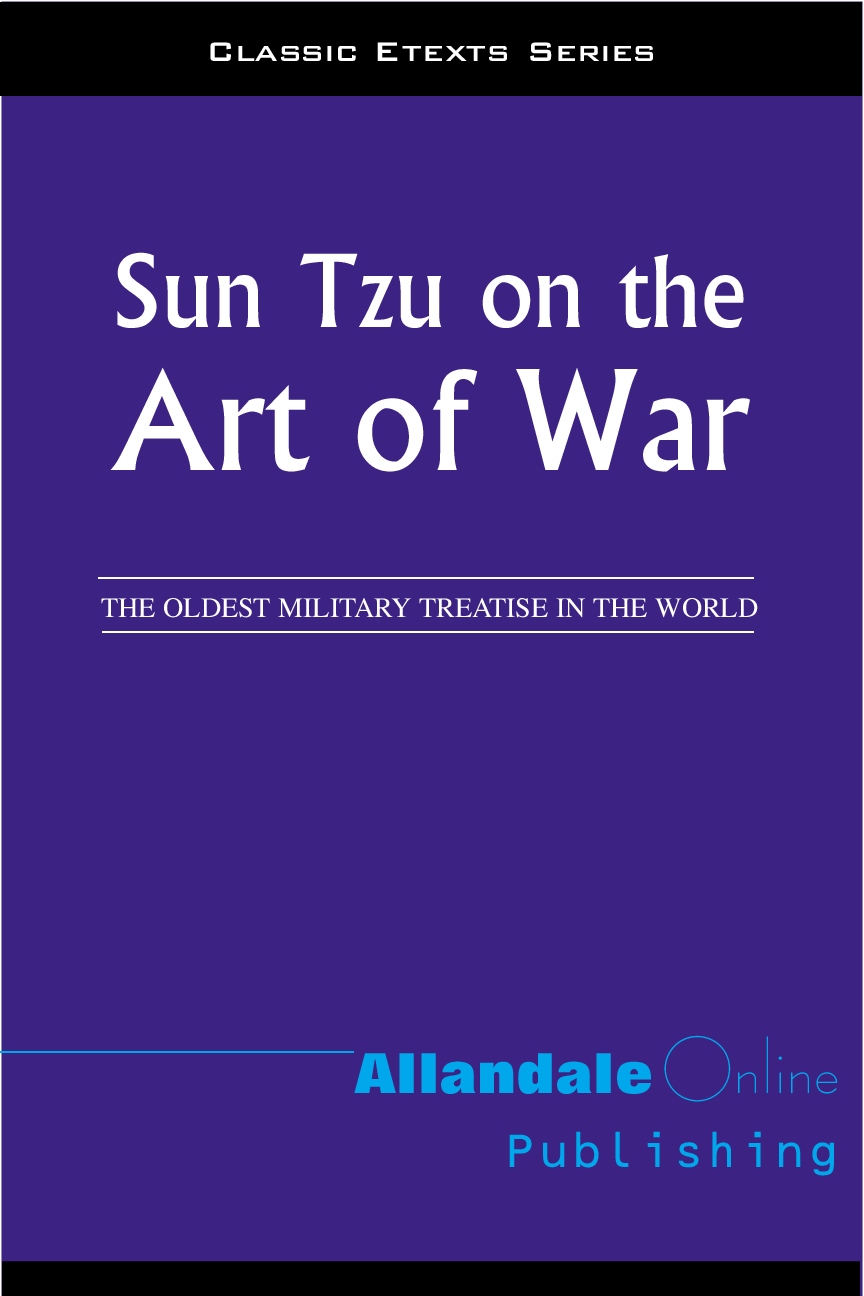


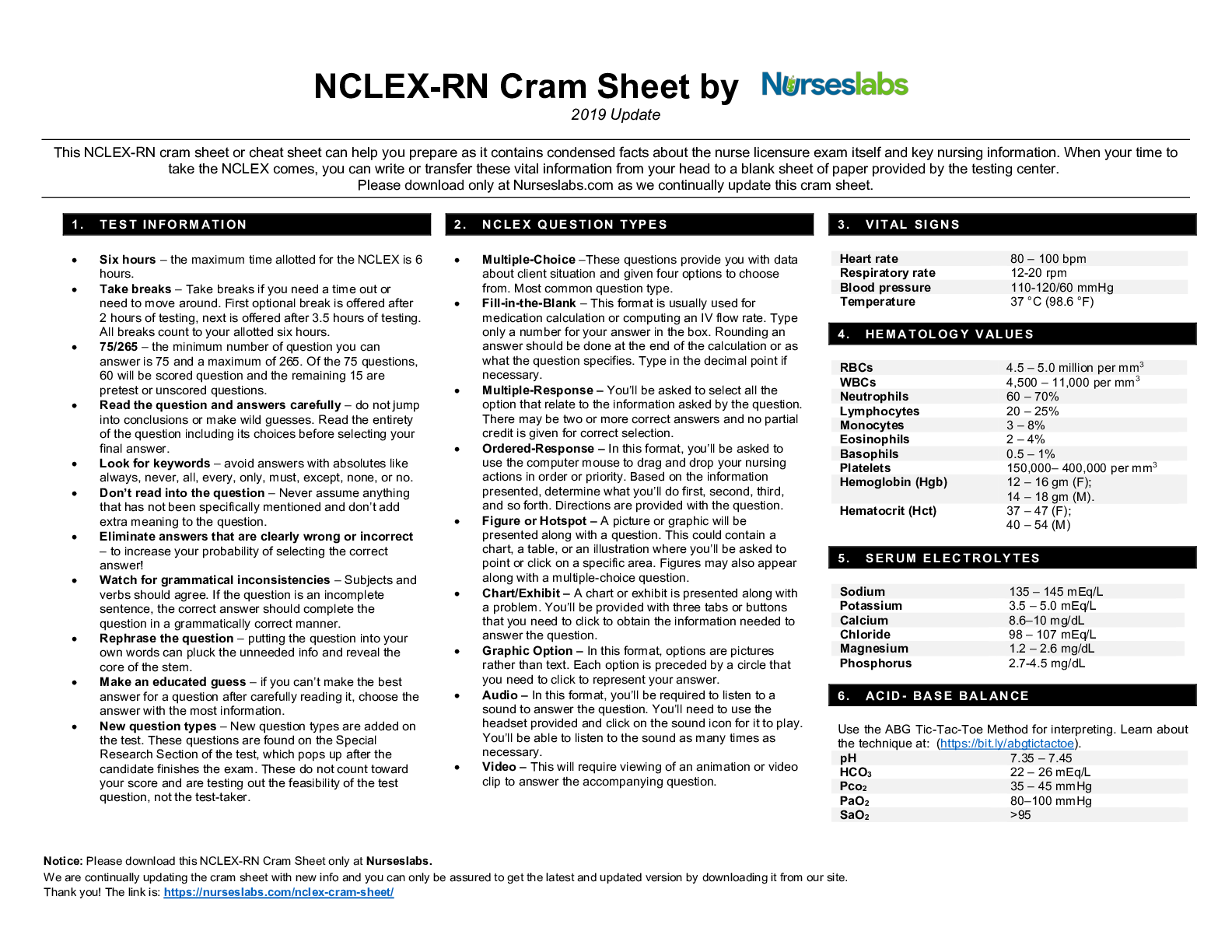
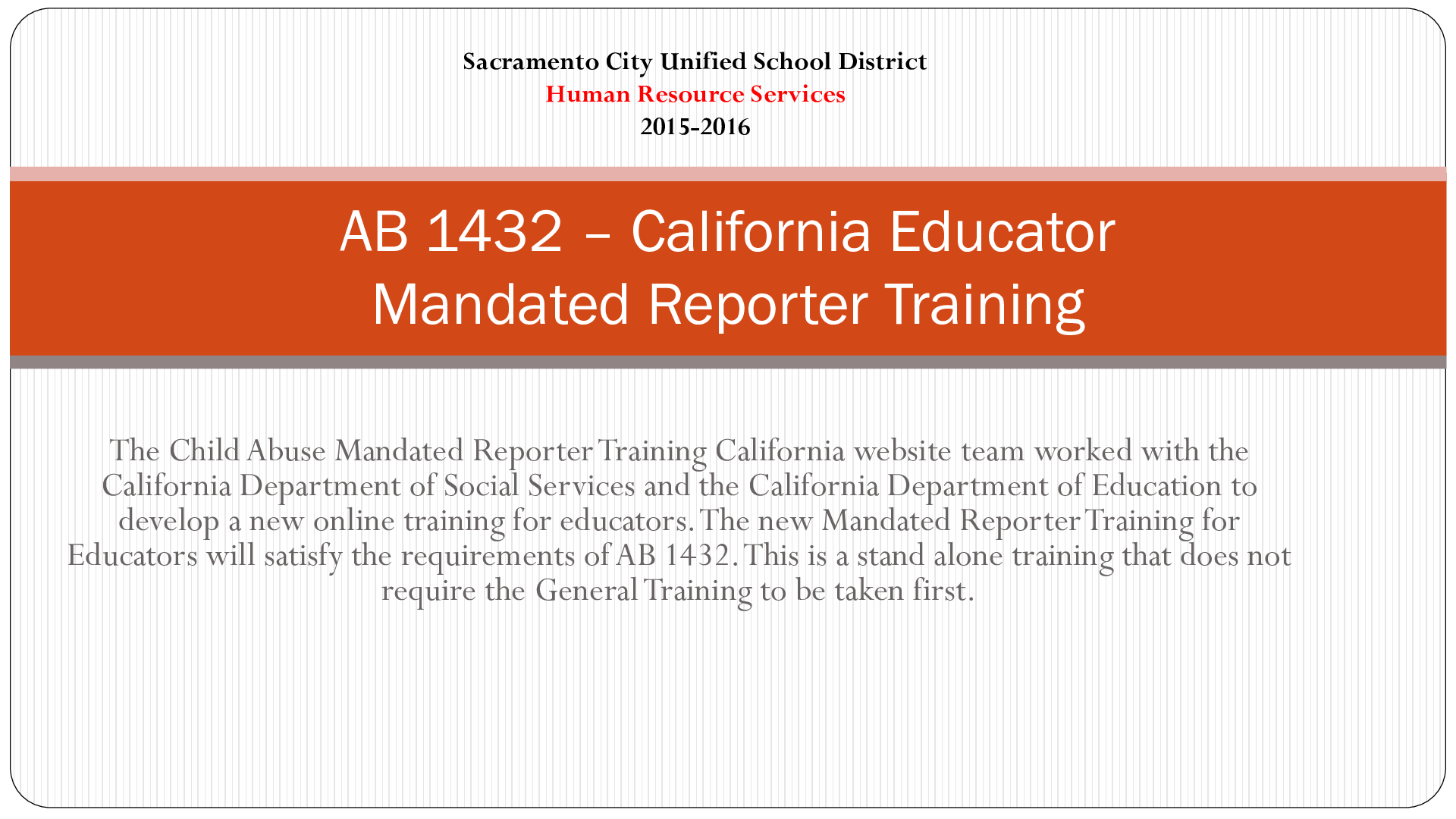
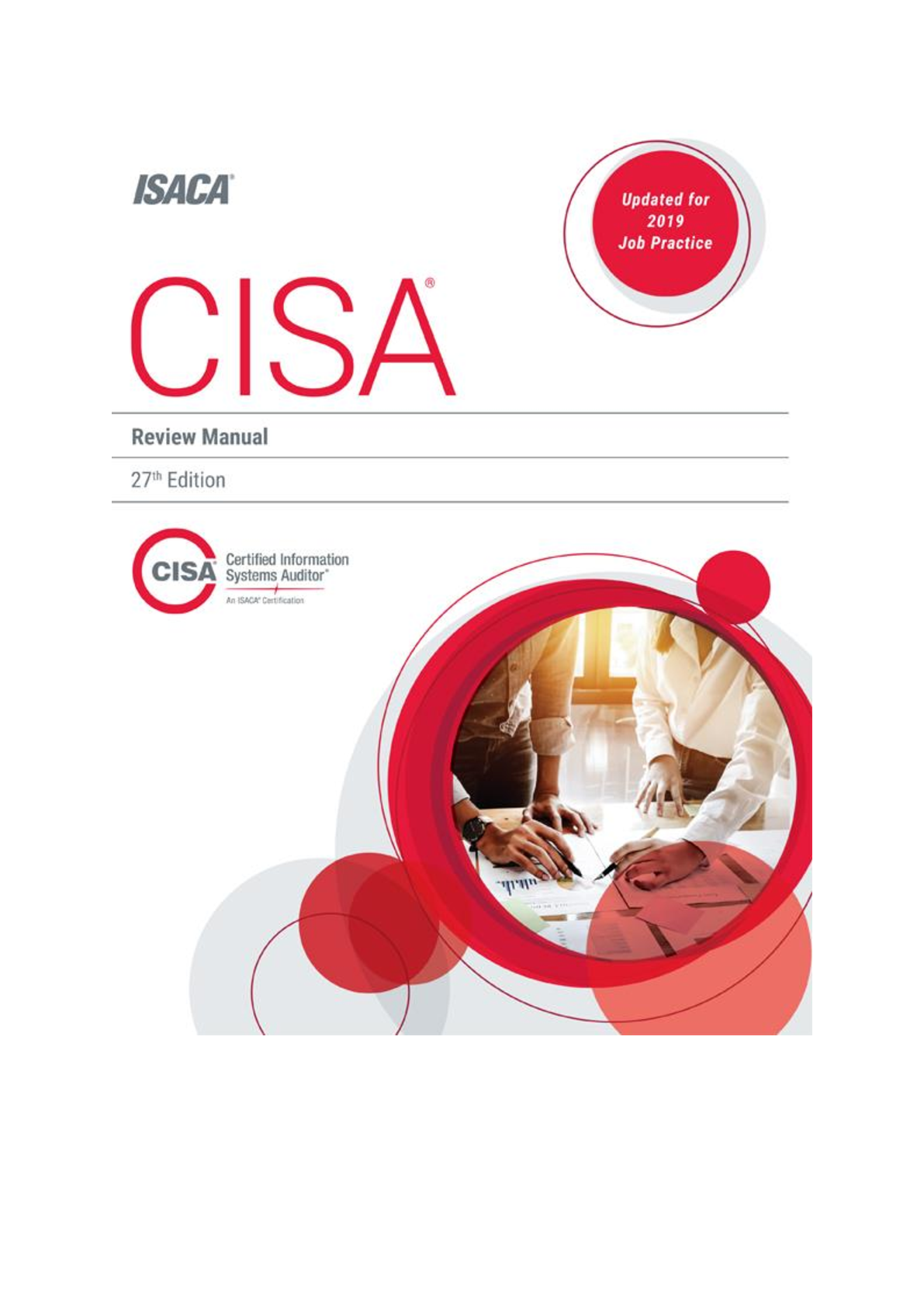




.png)
.png)
.png)

